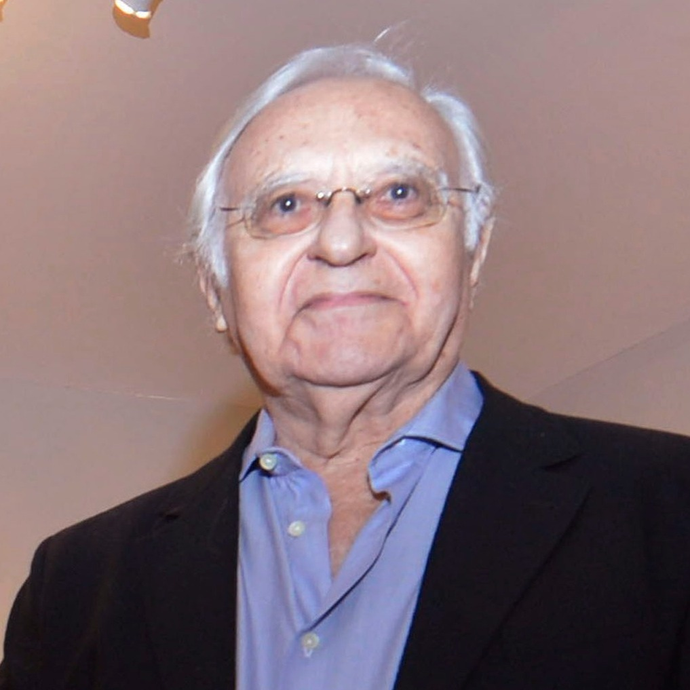
Abraham Palatnik
Abraham Palatnik stands as an iconic figure within Brazil's optical and kinetic art movements. He pioneered a relentless exploration of the intersection between art and technology.
Biography of Abraham Palatnik
Abraham Palatnik was born in 1932 in Natal, Brazil. He hailed from a Jewish background, with his parents being Jewish immigrants from Ukraine.
From 1932 to 1942, he lived in Mandatory Palestine. Between 1942 and 1945, he pursued studies at the Montefiori Technical School in Tel Aviv, subsequently delving into art courses at the Municipal Art Institute of Tel Aviv.
Palatnik received training in mechanics, physics, and drawing during his time in Palestine. He returned to Brazil in 1948.
In 1949, Abraham Palatnik gained prominence with his first creation of the Aparelho Cinecromático [Kinechromatic Device], effectively revolutionizing the concept of painting. Utilizing bulbs with varying voltages, moving at diverse speeds and directions, he crafted kaleidoscopic imagery. This piece debuted at the 1st Bienal de São Paulo in 1951 and garnered an Honorable Mention from the International Jury for its originality.
From 1959 onwards, he ventured into the realm of three-dimensional movement, crafting works where electromagnetic fields activate small objects housed within enclosed boxes. Simultaneously exploring the technological frontiers of art, the artist also explored painting on two-dimensional surfaces.
In 1962, he initiated the series Progressões (Progressions), followed by the birth of Kinetic Objects in 1964—wire sculptures, colorful forms, and oscillating threads animated by motors and electromagnets, reminiscent of the dynamic shapes seen in the works of American sculptor Alexander Calder.
Abraham Palatnik has been featured in numerous exhibitions both in Brazil and abroad, notably appearing in eight editions of the Bienal de São Paulo (1951-1969) and the 32nd Biennale di Venezia in Italy (1964).
Solo exhibitions include "Abraham Palatnik: Seismograph of Color" at Nara Roesler in New York (2022), "Abraham Palatnik: Obras recentes e pontuações históricas" at Nara Roesler in São Paulo (2020), "Abraham Palatnik: Progression" at Sicardi Gallery in Houston (2018), and many more.
Additionally, Palatnik's works have been featured in group exhibitions held at various venues worldwide, including Gallery 181 in San Francisco, Real Galeria in Rio de Janeiro, Casa Niemeyer in São Paulo, Centro Cultural Banco do Brasil in Rio de Janeiro, Galeria Duque in Porto Alegre, Museum of Modern Art in Warsaw, Galerie Lelong in New York, among others.
Tragically, the artist succumbed to COVID-19 amidst the pandemic in Brazil in 2020.
Years:
Born in 1932
Country:
Brazil, Natal